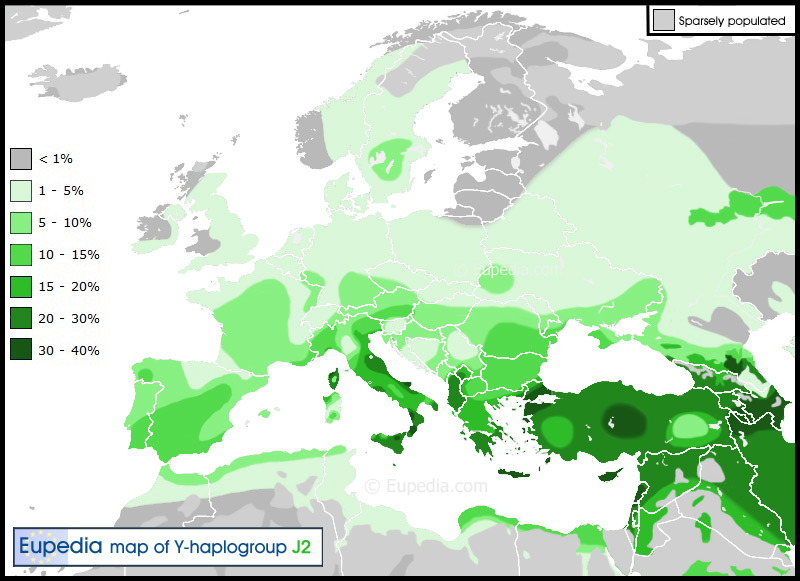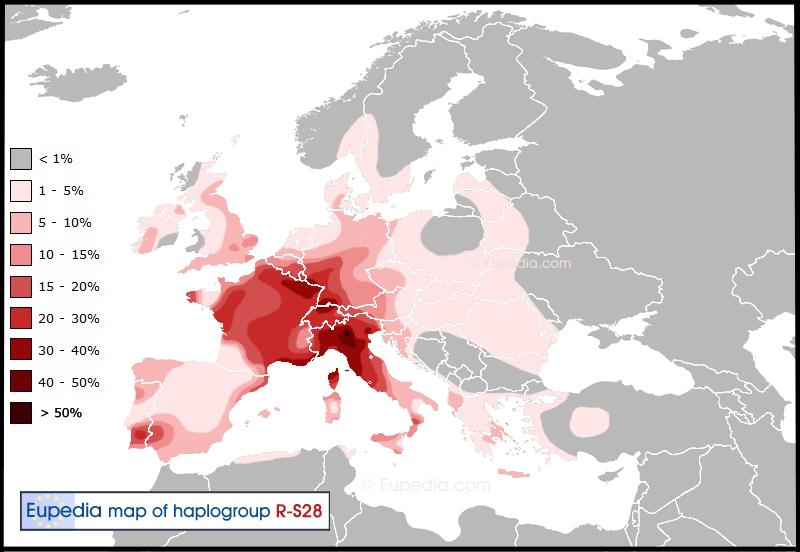Taranis
Elite member
What you say is likely, but I would not rule out the possibility of a Romano-British migration to the north. Perhaps the U152 diffusion in this lands it's the result of two factors.
I would rule out such a migration of Romano-British because no such thing was recorded. The "Old North" (roughly corresponding with northern England) was Brythonic-speaking (specifically a language usually refered to as "Cumbric", related with Welsh) until it gradually became Anglicized in the Medieval Ages. Even during the height of Roman power, control in northern England was volatile at best, and most Roman settlement was in the south and east of Britain (conversely, the north and west were the areas were Celtic languages survived into the Medieval Ages).
Another issue is this: if you subtract the Germanic components in England (U-106, as well as most I1, I2b and R1a), the concentration of U152 becomes much higher. I1 accounts for about 14% in England, and R1b-U106 accounts for approximately 25-30%. If you add I2b and R1a (which are also possible to be of Germanic origin, at least to a significant degree). If you add this together, you get approximately 40-50% of all male Haplogroups. If you reduce these Germanic components, the ratio of the remaining Haplogroups (mainly R1b-U152 and R1b-L21) becomes much higher. So we are talking about concentrations of as much as 20-30% of the pre-Anglo-Saxon population being U152. Now we have to consider that if U152 is dominantly Italic/Roman, you have to consider that it would not be the only Roman Haplogroup in England. The most obvious candidate for otherwise Roman Y-DNA in Britain is Haplogroup J2, which accounts for about 3.5% of the modern-day population. If we subtract the Germanic components, we end up with 6-7% of J2. So, we would be talking about approximately a quarter to over a third of the pre-Anglo-Saxon population being of Roman descend. How likely is this? Not very in my opinion.
Another aspect is Celtic tribes which you can find both in Britain and on the mainland, including:
- the Atrebates (Arras, France and Silchester, Hamshire, England)
- the Parisii (Paris, France, and Brough, Yorkshire, England)
- the Brigantii (Bregenz, Austria, and York, England)
From the linguistic (speakers of P-Celtic languages) and archaeological perspective, we have evidence for a fairly large-scale Celtic migration into Britain. In my opinion, the conclusion can be only that most English/British U-152 is of Alpine Celtic origin (since it matches the pattern we see), and not Roman/Italic.
I still think that there should be an Italic/Roman component to British U152, but if you correlate U152 against J2, it's clear that no more than a quarter or a fifth of the British U152 (in the areas that saw intense Roman settlement, that is) can be of Roman origin.





